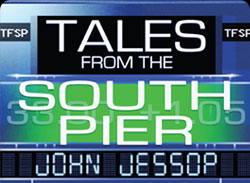I think those residents of the Normandy village of Ver-sur-Mer who are objecting to a proposed memorial to the 22,442 British soldiers who died during the battles that followed the D-Day landings, have a point. An artist’s drawing of the memorial shows a long wall, presumably to accommodate names, surrounded by landscaped parkland. The present vista is of a large pristine meadow sloping gently down to the English Channel.
Actually the protesting villagers have two points. The first is that the memorial, to be built on a 47-acre site overlooking a stretch of shoreline designated during the 1944 invasion as Gold Beach, would impede their view of the sea. The second is that it would encourage tourists who, requiring parking, lavatories and all the other accoutrements that go with catering for large numbers of people, would spoil the character of the village. The mayor of the village disagrees, on the grounds that it would be not only a suitably appropriate commemoration to the sacrifice of Allied soldiers – and the first tribute on such a scale to pay tribute to British dead – and would also bring to the area much-need revenue.
My guess, to be perfectly cynical about it, is that commerce is proving to be a more compelling rationale than gratitude.
I would have thought the nearby Commonwealth war cemetery at Bayeux, a vast but strangely evocative plot containing thousands of graves – the white headstones arrayed in neat perfectly spaced rows stretching as far as the eye can see – a sufficiently impressive tribute. It is, like all the graveyards managed by the Commonwealth War Graves Commission, understated and beautifully tended. I would have thought fields of headstones – crosses in American cemeteries – a perfectly appropriate statement on the futility of war.
But that seems insufficient these days. Memorials, it seems, must be grand enough not only to reflect the enormity of the event but also to ‘make a statement’ that satisfies an increasingly shrill demand for recognition of the sacrifices of serving men and women. That is not to demean those sacrifices, merely to suggest that they be remembered more solemnly. Incidentally, my father landed in Normandy – on D-Day Plus-36 – and survived that and all his other wartime encounters, so I am not entirely unmoved by either enormity or sacrifice.
Farther along the coast, in the American sector, the cemetery above Omaha Beach is every bit as impressive and moving as Bayeux, but in my opinion has not been enhanced by the relatively recent addition of the huge museum-like visitor centre through which one must pass to reach it. Actually, I think it is a distraction, and a rather ugly one at that.
But Americans have always been more inclined than the British – in this as in other related matters – to have the biggest and the best. I might add that, in my experience, many Americans visiting the Omaha Beach memorial seem only vaguely aware that the British were even involved in the D-Day landings. On the two or three occasions I went to Bayeux I saw very few American visitors.
The British used to like it that way. As a British veteran of Normandy once put it to me, “The Americans like to crow, we Brits are content to mourn”. Unfair, perhaps, but not all that wide the mark. The Bayeux cemetery is not a popular tourist attraction; it is rather a place designed – like all CWGC sites, from both World Wars – to encourage quiet reflection.
Military veterans now nearing the end of their lives, and French residents of Normandy of a certain antiquity, may well disagree with me, but in matters of deaths and suffering, I prefer the understated to the spectacular, the quiet to the noisy.
I would have thought the war cemeteries by the sheer size of their silent populations convey any sentiment that anyone would wish to express about war, whether in remorse or anger.


Be First to Comment